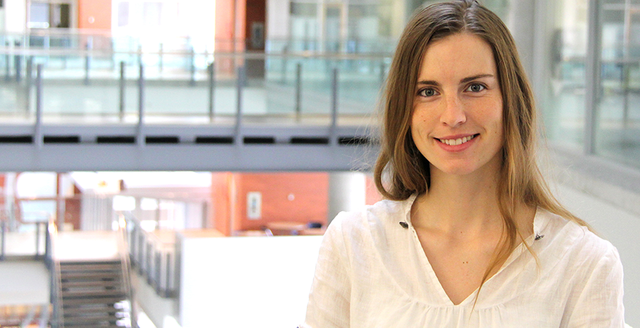Straight to the Source: Understanding Alberta’s Reservoir Management

Marie-Ève Jean, Masters student in Civil and Environmental Engineering, University of Alberta.
Systems models can be incredibly useful tools for policymakers. By creating sophisticated simulations to predict what might occur under a specified set of circumstances, they help those shaping policy understand what benefits or challenges might arise if they adopt certain ideas, or if unexpected external factors intervene.
The usefulness of these models can be heavily dependent on how well they are constructed –– what factors they take into account, how accurately they represent those factors, and what levers they provide to modify those factors. Constructing effective models can take time, which is why the Alberta Land Institute’s Systems Modeling Sustainable Land and Water Policy in Alberta's Irrigation Sector is a three-year project.
Aiming to create a tool to inform policymakers working on water policy in Alberta’s irrigation districts, the project’s research team needs to develop a strong understanding of a variety of factors impacting water use in these areas. One such factor: the management of Alberta’s reservoirs. How reservoirs are managed can have obvious and important influences on irrigation, but much of the existing work on this subject has been largely theoretical, and none was specifically applicable to the needs of this project.
Closing this information gap was one of the research team’s graduate students, Marie-Ève Jean.
Joining the University of Alberta’s Civil and Environmental Engineering Master’s program after a Bachelor’s degree in Water Engineering at Laval, Marie-Ève approached the study of reservoir management from a new — and very practical — perspective. Working closely with Dr. Evan Davies, one of the project’s principal investigators and her thesis supervisor, she sought to compare existing theoretical assumptions with actual irrigation management.
By shadowing reservoir managers and ditch riders, Marie-Ève had the opportunity to see first-hand how some of southern Alberta’s reservoirs were managed, and to learn about the history of their operation from people who had lived through many changes in practice and policy. She spoke to water managers, operators, and planners, both in southern Alberta and in the Government of Alberta, and learned a great deal about how their practices correlated –– or did not correlate –– with some of the latest theories in water management.
The insights gained from these interviews have formed the basis of Marie-Ève’s thesis, and have also led to a paper co-authored with Dr. Davies: “Water managers’ perspectives on reservoir operations for sustainable irrigation in Alberta.” She will present that paper in June, at the 8th River Basin Management 2015 conference, in A Coruña, Spain. The findings will also help further strengthen the model that Dr. Davies and his team are building, adding one more layer of useful detail to the tool they are creating for policymakers.
Marie-Ève will defend her thesis this summer, before traveling to Paris for a four-month appointment with the UNESCO International Hydrological Programme, working on international water management issues. Her work joins that of dozens of other graduate students from across Canada, who are making valuable contributions to ALI’s research projects.